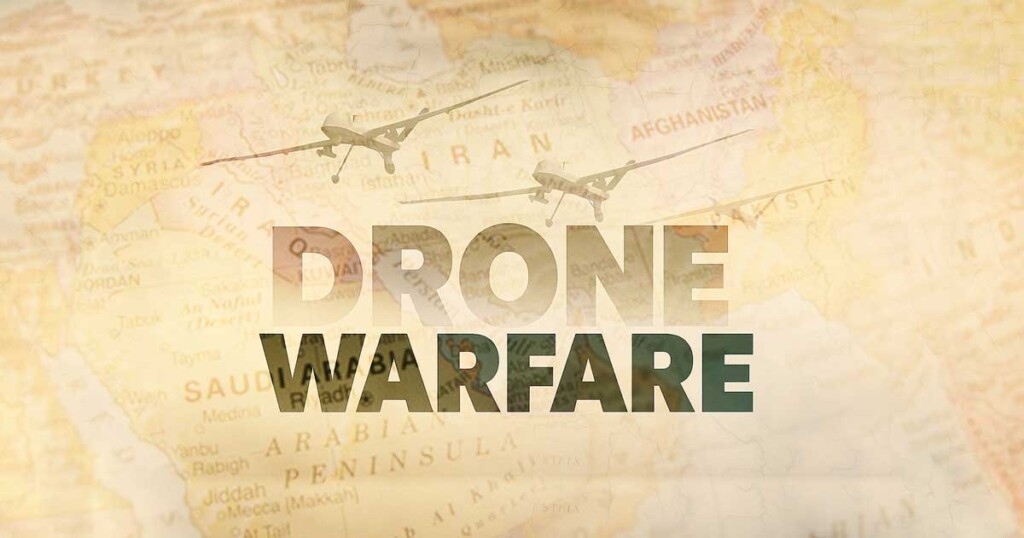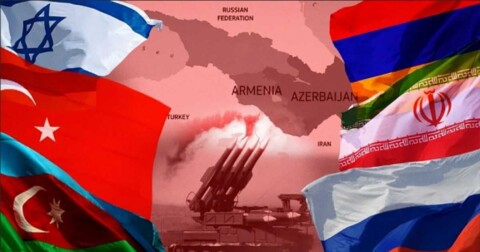The story of missile drones, contrary to popular belief, neither begins nor ends with the V-1 flying bomb developed by Nazi Germany over 80 years ago. Missile drones have repeatedly resurfaced in military planning during the final decades of the Cold War. Ironically, renewed interest in this type of weapon once again originated from Germany — the cradle of the V-1.
HOW TO DECEIVE THE SOVIET AIR DEFENSE?
The deeply echeloned and highly developed air defense systems of the Warsaw Pact countries required NATO to maintain a large reserve of cheap unmanned decoys. The role of these decoys was to overwhelm Soviet air defense systems with a flood of false targets, thereby relieving NATO air forces during operational strikes.
In this context, the well-known German aviation company Dornier developed an exceptional prototype of an armed system — the DAR project. This was a missile drone equipped with a passive homing head that could lock onto jamming sources, capable of operating in a “fire-and-forget” mode. The drone was large enough to deceive Soviet air defense operators, who were still using analog computers for radar signal processing.
However, the DAR project remained at the prototype stage. Its development was halted at the end of the Cold War due to reduced German military budgets. It seemed that the concept was doomed to be forgotten but missile drones gained unexpected momentum in “hot zones” such as Southern Africa and the Middle East.
SOUTH AFRICA — THE CRADLE OF MILITARY DRONE USAGE
One could say that the true cradle of mass military drone usage is the Republic of South Africa. This is no coincidence — for much of its modern history, South Africa existed in an extremely unfavorable military-political environment, marked by international isolation and, as a consequence, an inability to procure modern weaponry. At the same time, the country possessed a strong defense-industrial complex, excellent military personnel, and a remarkable level of innovation in solving military challenges.
As early as 1977, the Council for Scientific and Industrial Research (CSIR) provided the South African Air Force (SAAF) with its first UAV prototypes, intended as demonstration models for experimental use. Just ten years later, Seeker 400 UAVs were already being used en masse in aerial strikes in Angola. Interestingly, besides reconnaissance, these drones were also employed as flying decoys to detect Soviet air defense systems — a strategy that closely resembled the tactical logic and operational challenges faced simultaneously by both South Africa and NATO.
ARD-10 PROJECT IN ISRAELI HANDS
The South African company Kentron, which developed the UAV Seeker 400, also produced the ARD-10 missile drone — an anti-radiation unmanned aircraft whose purpose and technical design were almost identical to the project simultaneously developed by the Dornier company in Germany. After the conclusion of the so-called “Bush War,” the ARD-10 project also faced budget cuts, but its fate took a different path — it became a system in serial production, under a different flag: Israel, which purchased the production license for this type of missile drone from Kentron.
Ironically, the German DAR project followed a similar path — after a serious redesign, it reemerged on the global stage under a new name: as the Iranian missile drone known as the “Shahed.”

DRONE RIVALRY BETWEEN TEHRAN AND TEL AVIV
The interest of countries like the Islamic Republic of Iran and Israel in remotely operated weapons and unmanned systems was no coincidence. Both Tehran and Tel Aviv endured destructive and bloody conflicts with severely limited resources and industrial capacities. In both cases, military defeat could have meant the complete loss of statehood. The reality of the Middle East demanded unconventional and innovative solutions to strengthen military power — solutions that had to be relatively inexpensive and feasible under conditions of weak industrial infrastructure.
Israel, it is worth noting, only achieved significant development in this field in the 21st century. Before that, it practically had no military industry — such an industry had never historically existed in the region, and its development was almost impossible due to numerous sanctions and restrictions imposed on the Jewish state, similar to the current situation with Iran.
However, while Israel — with access to American aircraft deliveries — sought ways to supplement its capabilities with affordable and replaceable systems, Iran’s path was shaped by completely different problems, and therefore by different ideas and technical solutions.
FOLLOWING THE EXPERIENCE OF IRAQ
After the Iran–Iraq War, Tehran found itself in a very difficult position. Its once-rich stockpiles from the Shah’s era — composed mostly of advanced American weaponry — were depleted and in need of replenishment. Meanwhile, the country was under harsh sanctions and embargoes. The threat of a new major military conflict was becoming increasingly likely. After Operation Desert Storm and the growing military pressure on Iraq, it became clear that the strategic landscape in the Middle East had radically changed, while Iran was left unable to counter the intensifying American presence following the collapse of the Soviet Union.
Iran needed an alternative answer to a wide range of traditional weapons — from fighter jets to cruise missiles — but it had neither the means to purchase them nor the capacity to produce them. Procurement was not possible even from China or North Korea, which had been Iran’s main suppliers during the war — cruise missiles were unavailable, and the air force was reduced to outdated models like the MiG-21. Nevertheless, Iran did obtain technology for building Scud-type ballistic missiles from North Korea.
The Iranian military leadership seriously considered the possibility that the country could be attacked and occupied by Western forces. This belief was further reinforced by the U.S. invasion of Iraq in 2003. The Iraqi experience in guerrilla warfare clearly showed the need for specialized weapons that could be assembled in improvised conditions and used to strike American forces from long distances.
TECHNICAL DOCUMENTATION THROUGH ESPIONAGE
The Islamic Revolutionary Guard Corps (IRGC) began exploring unmanned systems as early as the late 1980s. At that time, however, Iran lacked the capacity to produce serial or functional systems of this kind. For that reason, the IRGC intensified its efforts in industrial espionage — and with great success. By the 1990s, Iran had already acquired a significant amount of technical documentation on various UAV systems (especially on the DAR project). Tehran also actively sought to capture and analyze operational UAVs from other countries.
It is known, for example, that between 2001 and 2012, Iranian intelligence services managed to seize and export at least 14 American UAVs of various types, mostly in Afghanistan and the Middle East.
THE UNIQUE SHAHEED
The result of all these efforts was the emergence of an entire spectrum of armed unmanned systems in Iran — with the Shahed missile drone rightfully considered the reference point in this category. What makes the Shahed unique is that, unlike its predecessor, it is not a substitute for anti-radiation missiles. Instead, it was redesigned to fulfill the role of cruise missiles.
The Iranians optimized, simplified, and drastically reduced the cost of its construction in order to enable attacks on ground targets in a “fire-and-forget” mode. Structurally, the Shahed is composed of components and modules intended exclusively for civilian use, which are available for legal purchase and can be assembled into a functional aircraft even in modestly equipped workshops.
A CHALLENGE FOR AIR DEFENSE
In addition to the obvious and previously mentioned advantages — such as simple design, ease of production and maintenance, and low cost — missile drones enable the rapid formation of a massive aerial strike group capable of flying hundreds of kilometers at low altitudes. This combination of characteristics creates challenges that are very difficult to overcome, even for well-equipped and multilayered air defense systems.
Under such conditions, it is not enough to simply shoot down the aircraft — it must be done in the most economically efficient way, because even the simplest air defense missile costs many times more than the drone itself.
Technically speaking, intercepting these attacks is not particularly complex. This weapon represents a slow, relatively large (and thus easily detectable) target that typically follows simple flight paths. The real challenge lies in doing this without exhausting air defense missile stockpiles — because once those are depleted, the path opens for successive mass attacks which, if left unhindered, can inflict devastating levels of damage.

AND EVERYTHING IS EXPOSED
The true danger of missile drones lies in the fact that they represent a type of target for which modern air defense systems have no economically viable response. After the Cold War, anti-aircraft artillery was practically eliminated as a class of weapon across the world, and inexpensive short-range air defense systems were not a focus for armies that shifted toward counterinsurgency — thus, those systems were never further developed.
The ongoing Russian-Ukrainian conflict clearly demonstrates that, with well-planned aerial operations, missile drones are more than capable of striking complex, high-value targets deep behind enemy lines. Today, there simply are no cheap, countermeasure solutions in mass production. Missile air defense systems can only provide local, limited protection for specific cities — and everything beyond that remains exposed.
EXHAUSTING UKRAINIAN AIR DEFENSE SYSTEMS
The Russo-Ukrainian conflict has become the most significant combat event in which missile drones have been used on a massive scale. Prior to this, their use was limited to occasional attacks by pro-Iranian rebel groups on American bases in Iraq and somewhat more intense strikes by Yemeni forces on Saudi Arabian territory.
However, the ongoing hostilities have revealed completely new dimensions of using this type of weapon. Already in the initial phase, in the autumn of 2022, the Russian Federation deployed dozens of times more missile drones than the entire Middle East had used over the previous 15 years. These drones were used in large formations — sometimes numbering several hundred — as a complement to waves of cruise missiles.
At first glance, the Russian model of using missile drones appears to be a relatively simple tactical approach. Yet it carries long-term operational implications. Essentially, it is based on a principle of attrition. In some ways, it resembles Western Cold War-era theories about the use of flying targets to overwhelm enemy air defenses.
The main objective is to apply continuous pressure on Ukraine’s air defense system and gradually wear down its technical and organizational resources.
GAPS FOR CRUISE AND BALLISTIC MISSILES
Initially, the Russian side launched large quantities of missile drones at low altitudes, which significantly depleted Ukraine’s stock of Soviet-era surface-to-air missiles. In response, Ukraine began rapidly building additional layers of air defense, using anti-aircraft machine guns and cannons of various calibers, origins, and production years. This allowed for temporary resistance to mass attacks at extremely low costs.
However, Russia adapted its bombing campaign. Missile drones began to be used in smaller aviation groups or even individually, entering Ukrainian airspace at medium altitudes. This was no accident. Although drones are easier to detect at those altitudes, they are significantly harder to shoot down. Short-range anti-aircraft artillery requires interception and engagement using expensive means such as air defense missiles or fighter jets. Through this approach, Russia is systematically depleting Ukraine’s air defense capacities, creating openings through which more advanced and costly systems — such as cruise and ballistic missiles — can pass.
THE DIFFERENCE BETWEEN UKRAINIAN AND IRANIAN APPROACHES
Equally important is the Ukrainian model of using this type of weapon. For Ukraine, missile drones represent the only weapon capable of carrying out deep operational strikes on Russian territory. It is also the only mass-produced Ukrainian system of this type (with the exception of the Neptune anti-ship missile, which according to some reports has been adapted for use as a cruise missile by removing complex guidance systems and increasing fuel capacity — but production is limited to several dozen units).
The Ukrainian approach is interesting because it sharply contrasts with that of Iran. While Iran conducts mass aerial assaults, Ukraine uses small groups of missile drones that penetrate Russian airspace, avoiding air defenses and targeting precise infrastructure objectives.
WHERE VULNERABILITY IS GREATEST
Every military success is based not so much on the strength of the attacker, but on the weakness of the defender. This is one of the basic principles of military science: the situation must be observed through the eyes of the enemy, assessing one’s own strengths and weaknesses from the adversary’s perspective — and striking where vulnerability is greatest. The Ukrainian bombing campaign is no exception. Its success is not the result of phenomenal planning, secret technologies, or superior tactics. It stems from the skillful exploitation of a series of Russian structural weaknesses — made possible by a functioning intelligence and analytical apparatus.
The first and most important factor is the vast territory of the Russian Federation. Even in Soviet times — despite a massive military budget and industrial capacities — full security of airspace was practically unattainable, at least by the classical Soviet doctrine of multilayered air defense based on ground systems.
In today’s Russia, those doctrines largely remain the same, but the means for implementing them have been drastically reduced. Combined with economic and geographic realities, this means that only limited, localized protection is possible — concentrated around economic and transport hubs, i.e. cities — while the surrounding areas remain in the “fog of war.”
PHYSICS AS A FACTOR
The next key factor is… physics. More precisely, its impact on radar’s ability to detect low-flying targets. The ability of ground-based radar stations to detect targets at low altitude is unfortunately very limited. It’s worth mentioning a study titled “Detection of Low-Altitude and Small Targets by Radar Systems,” conducted by the Department of Electronic and Optical Engineering of the Artillery College in Shijiazhuang, China.
The research points to the practical inefficiency of most standard military radars in service (including those purchased from Russia) at altitudes below 600 meters.
The issue of detecting and intercepting low-flying objects has not significantly progressed since the first half of the 1980s. Russian air defense systems are no exception — they are adapted to threats from the late Cold War period, such as jet fighters and second-generation missiles, but do not fully meet the needs of modern armed forces.

SATELLITE RECONNAISSANCE OPERATIONS
Another key factor is the availability of dual-use technologies — a term that is quite appropriate here. Today, it is possible not only to manufacture strike weapons from commercial components but also to conduct reconnaissance operations for the purpose of planning airstrikes. This refers, of course, to satellites equipped with SAR (Synthetic Aperture Radar) technology. The images they produce are legally sold on the civilian market.
In the context of this topic, SAR technology is particularly interesting because it allows the detection of strong radiation sources — such as radar stations and electronic warfare systems. Such insight is, naturally, of exceptional value to any military planner, as it enables the creation of flight paths into enemy airspace with minimal risk and an almost complete picture of the defender’s available capacities.
Of course, satellites equipped with SAR technology should not be viewed as an all-encompassing source of intelligence data — but they significantly accelerate the processing of information collected from various sources and improve the planning of aerial operations.
TARGET RECOGNITION ALGORITHM
Another dual-use technology, crucial in the context of Ukrainian strikes, is the broad commercial availability of high-quality optical systems, professional software, and powerful small computers — technologies that just half a century ago were reserved exclusively for elite military agencies of the world’s leading powers.
This refers to the revival of a system known as DSMAC (Digital Scene Matching Area Correlation), developed in the United States during the final decade of the Cold War and applied in Tomahawk cruise missiles. DSMAC is a target recognition algorithm that operates based on a set of pre-modeled flight data stored in the drone-missile’s memory.
Here’s how it works: first, a satellite image of the intended target is obtained. This is the so-called “reference image” — the base model from which a digital representation of the target is generated for the purpose of an airstrike. Today, based on combat experience, that model is usually extremely detailed and volumetric, a 3D rendering that can be easily created during mission planning thanks to the high resolution of modern satellite images and the abundance of publicly available data (in today’s world, it is not difficult to obtain precise technical data for almost any building of interest).
IMAGE IN THE DRONE’S MEMORY
The digital model is uploaded into the drone’s memory, and during the flight, the onboard computer compares that model with the video feed from its own optical system. Simply put, the process resembles comparing two photographs — once a match is confirmed, the drone automatically calculates the exact trajectory needed to strike the memorized target.
DSMAC relies entirely on the drone’s internal processing power — it requires no input from an operator. This means the drone is practically invisible to electronic reconnaissance systems and cannot be jammed by electronic countermeasures. It can only be neutralized by kinetic means — which is made more difficult by the overall shortage of air defense resources.
Trends show that the fundamental principles of military art do not change with the level of technological advancement. Regardless of innovation, large-scale war always demands the mobilization of vast quantities of forces and resources — resources that must be replenished and expanded.
As a result, missile drones will continue to evolve and be used in modern combat operations, due to their payload capacity, precision, ease of development, and scalability in production.





